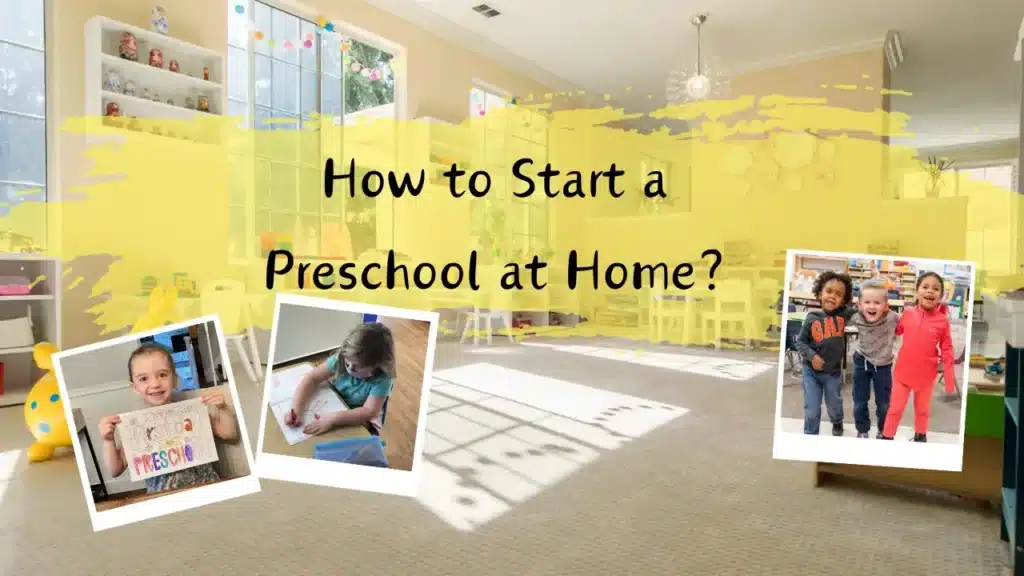Are you interested in starting a preschool at home? With the growing popularity of homeschooling, homeschool preschools have gained tremendous traction in recent years. This alternative approach to schooling allows you to customize the learning environment to fit your child’s unique needs and interests while providing a comprehensive early education foundation.
Starting a preschool at home may seem daunting, but with the right guidance and creativity, you can provide a fun and exciting learning experience in your living room.
This article will explore the basic steps to successfully launching your home preschool.
Benefits of Starting a Preschool at Home
Starting a preschool at home offers numerous benefits. It provides the convenience of working from home and the joy of spending more time with your children if you have any. Financially, renting or purchasing a separate property reduces the overhead costs. Pedagogically, it allows you to create a personalized learning environment that adheres closely to your educational philosophy. This control over the curriculum and the teaching pace can lead to better-tailored educational outcomes that meet each child’s unique needs.
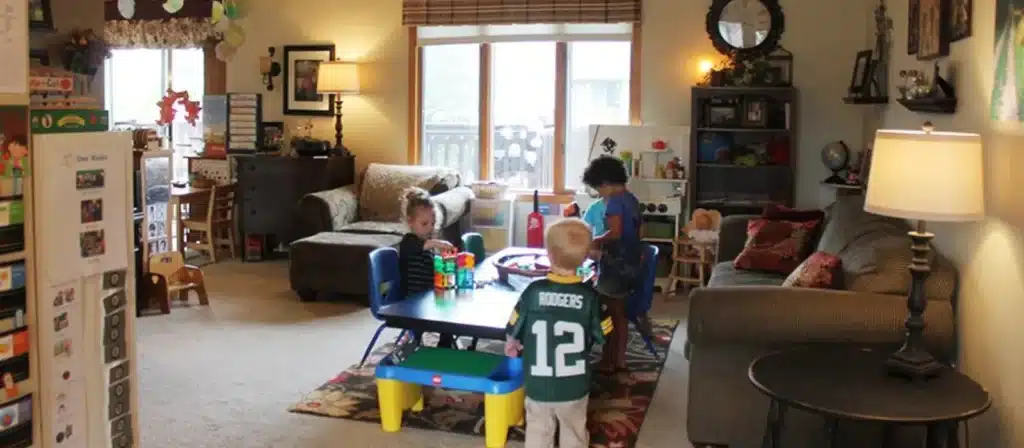
Parents might choose your preschool because they want a more intimate setting for their children, with lower student-to-teacher ratios and potentially more significant attention to individual learning styles. Additionally, being able to oversee the entire operation gives you the flexibility to experiment with innovative teaching methods that might not be feasible in larger, more bureaucratic educational settings.
Learn About Preschool at Home Licensing Requirements
The licensing requirements for starting a preschool in your home vary significantly depending on your location. Typically, you must obtain a license from a local government agency that oversees child care and education services. This process often includes home inspections to ensure your space meets health and safety standards, background checks, and possibly educational prerequisites.
To maintain your license, you must likely comply with ongoing requirements such as maintaining a certain child-to-adult ratio, participating in continuous education, and adhering to specific curriculum standards. Understanding and navigating these requirements can be daunting, but they are crucial for ensuring the safety and quality of your home preschool.
Find a Location for Your Preschool at Home
You’ll want a space that is safe, welcoming, and conducive to learning. This means a quiet area with plenty of natural light and large enough to accommodate different learning stations and play areas. Ideally, this space should be somewhat separate from the rest of the household to minimize disruptions and maintain a professional atmosphere.
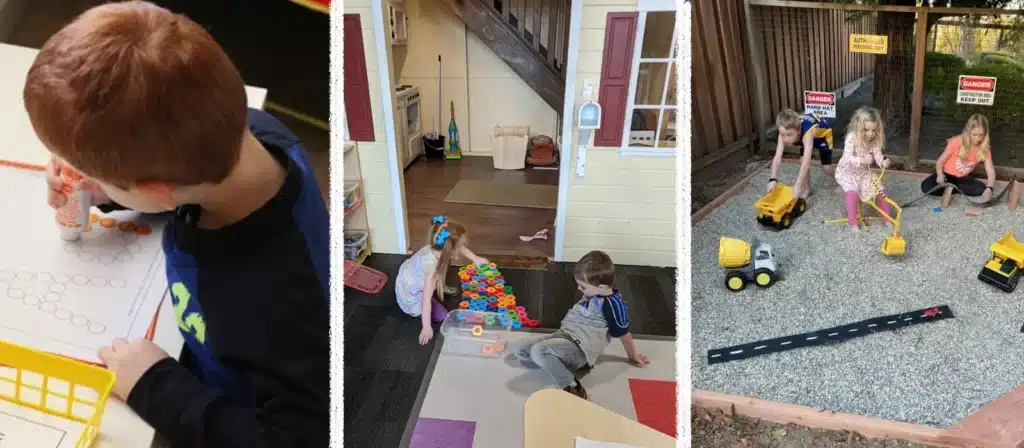
Safety improvements might include securing furniture to the walls, using child-safe locks on cabinets, and ensuring all play materials are non-toxic and age-appropriate. Additionally, consider the outdoor play areas; a fenced, well-equipped outdoor space can significantly enhance the daily routine, allowing children to safely explore and engage with the environment.
Develop Policies and Procedures
Developing clear policies and procedures is essential for running a successful home-based preschool. These policies should cover various operations, including enrollment and admission, health and safety standards, daily schedules, emergency procedures, and parent communication.
Having well-documented procedures helps maintain consistency and safety and builds trust with parents, who will appreciate the transparency and professionalism that such documents suggest. Additionally, consider how you will handle behavioral issues, accidents, and sickness to ensure you’re prepared for any eventuality.
Prepare Preschool at Home Supplies
Preparing your preschool involves more than just educational materials and toys. You will need basic furniture like child-sized tables and chairs, storage for supplies, and perhaps specialized learning materials based on the educational philosophy you choose to follow, such as Montessori or Reggio Emilia.
1. Educational Supplies
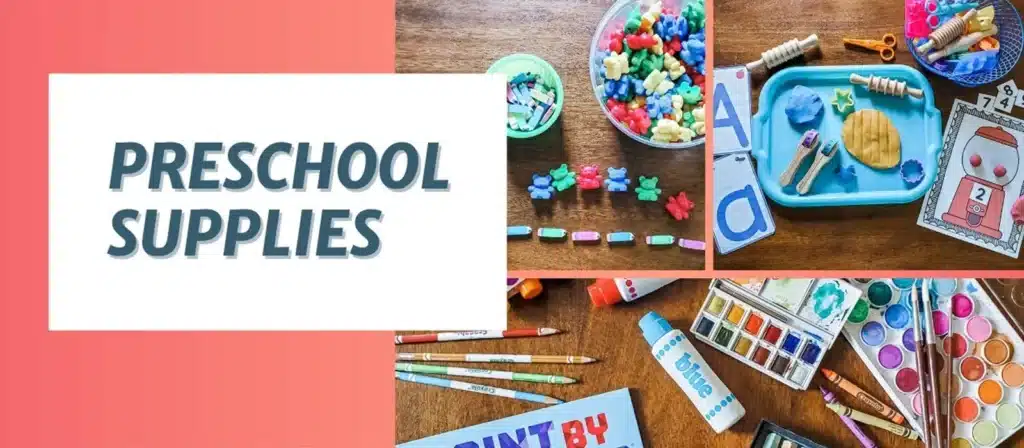
- Books: Include various books, such as picture books, storybooks, and interactive books, to develop reading skills and imagination.
- Art Supplies: Stock crayons, markers, colored pencils, watercolor paints, glue, safety scissors, and construction paper for creative projects.
- Writing Tools: Provide pencils, erasers, and lined paper to practice writing skills.
- Learning Mats: Mats with letters, numbers, or shapes can make learning fun and interactive.
2. Learning Aids

- Flashcards: Useful for teaching colors, shapes, numbers, and basic sight words.
- Puzzles: Wooden or cardboard puzzles help develop problem-solving skills and hand-eye coordination.
- Educational Toys: Include toys that promote learning, such as sorting cubes, counting beads, or a toy clock to learn time.
- Activity Books: Workbooks for coloring, matching, or simple math to encourage learning.
3. Technological Tools
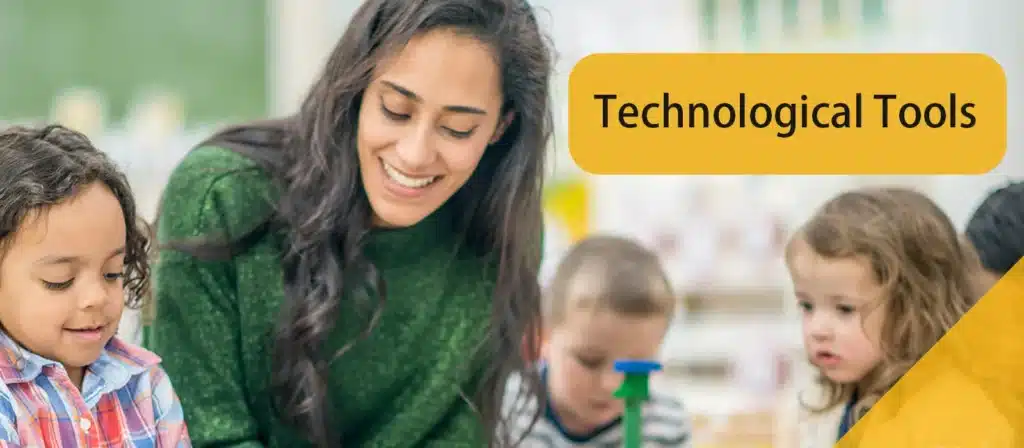
- Tablet with Educational Apps: Load a child-friendly tablet with apps that encourage learning through games.
- Audio Books and Music: These can be great for auditory learning and language development.
- Interactive Whiteboard: If budget allows, an interactive whiteboard can be a fantastic tool for engaging digital learning.
4. Organizational Supplies
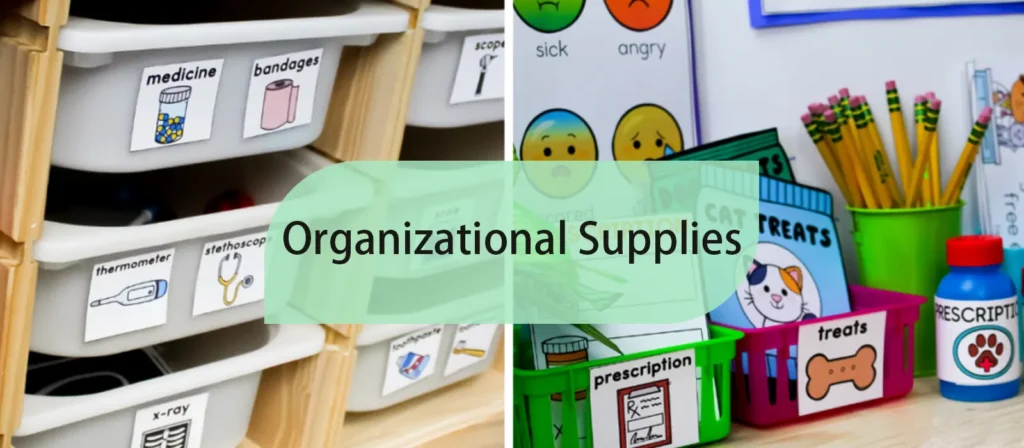
- Storage Bins and Organizers: To keep supplies tidy and teach organizational skills.
- Label Maker: Helpful for labeling bins, folders, and personal items to keep everything in order.
- Activity Planner: A planner to schedule daily or weekly educational activities.
5. Safety and Health

- First Aid Kit: Essential for any accidents that might occur.
- Child-Safe Sanitizer and Cleaners: Keep germs at bay with child-safe sanitizing products.
- Emergency Contact List: Always have a list of emergency contacts visible and accessible.
Preparing for Preschool Lessons
Lesson planning is the cornerstone of any educational setting, and a home-based preschool is no exception. When preparing lessons, focus on diverse activities that promote developmental skills across various domains, such as cognitive, social-emotional, and physical. Utilize a mix of structured activities and open-ended play, which encourages creativity and problem-solving.
Incorporate themes that resonate with young children, such as nature, animals, and family, and use these themes to weave together stories, arts and crafts, and science experiments. Keep in mind the attention spans of young learners by alternating between high-energy activities and quiet, focused tasks.
For resources and ideas on preschool activities, you can access educational websites and platforms that offer lesson plans and teaching tips. These resources provide a wealth of creative ideas that can be adapted to fit the needs and interests of the children in your care.
Develop a Routine for Your Preschool at Home
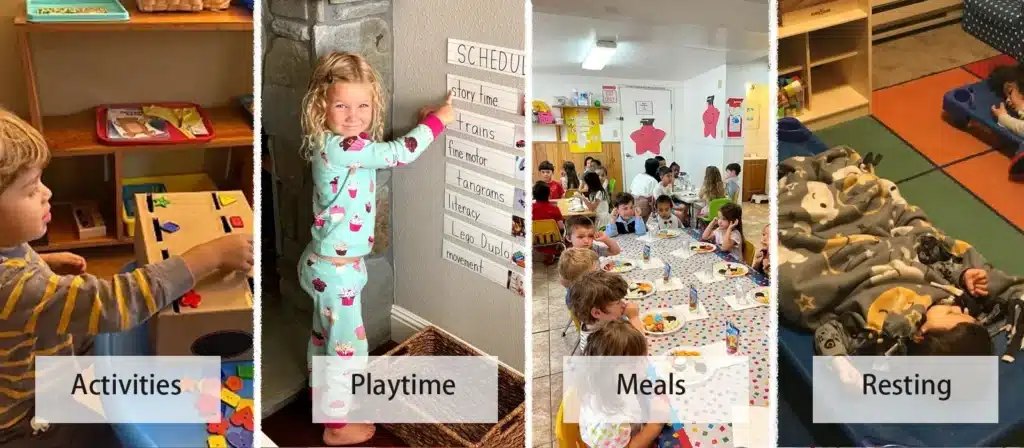
Children thrive on routine as it creates a sense of security and helps them understand what is expected of them. A typical day should include a balanced mix of learning activities, playtime, meals, and rest periods.
Begin with a morning circle time where you can introduce the day’s themes, read a book, and engage in some group discussions. This helps set the day’s tone and prepares the children for learning. Schedule regular intervals for snacks and outdoor play to keep energy levels balanced and encourage physical activity.
Regularly review and adjust the routine to better suit the needs of the children and any logistical changes in your preschool setup. Flexibility within the structure is key to accommodating the unpredictable nature of working with young children.
Hire Staff to Help You Run Your Preschool at Home
As your home-based preschool grows, you might need additional staff to maintain a high-quality learning environment. When hiring, look for individuals who are not only qualified but also share your educational philosophy and passion for early childhood education.
Conduct thorough interviews and background checks to ensure the safety and security of the children in your care. Provide adequate training for any new hires to familiarize them with your curriculum, daily routines, and any specific policies you have in place.
Relaxing Preschool at Home
Here are some strategies to ensure your preschool remains a calming and supportive space for learning:
- Develop a Flexible Routine
A flexible routine allows you to adapt to the different needs and moods of the children on any given day. While it’s important to have a structure, being able to shift activities around as needed can help manage better when children are tired, overly energetic, or particularly curious about a specific topic. - Create a Child-Led Routine
Encourage a child-led approach within the daily routine by allowing children choices within the day’s structure. For example, let them choose which books to read or what type of art supplies they want to use. This empowers the children and fosters independence. - Combine Learning as Much as Possible
Integrate learning into all of the day to make education a natural, enjoyable part of children’s lives. For instance, use meal times to teach about nutrition or use outdoor play to discuss nature and science.
Conclusion
Starting a preschool at home is a significant commitment that requires dedication, planning, and a deep understanding of children’s needs. Following the steps outlined above, you can create a successful home-based preschool that provides valuable early learning experiences in a warm and inviting atmosphere.

